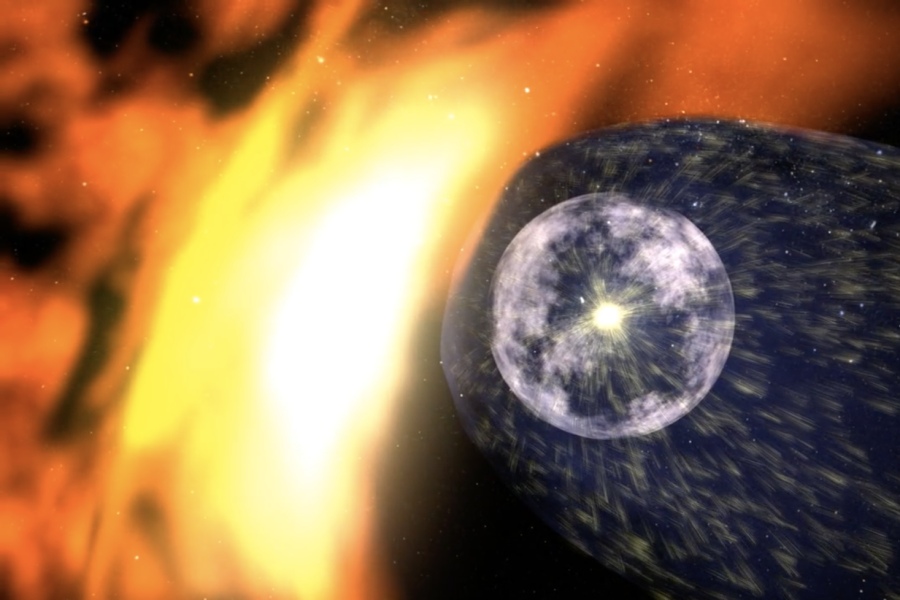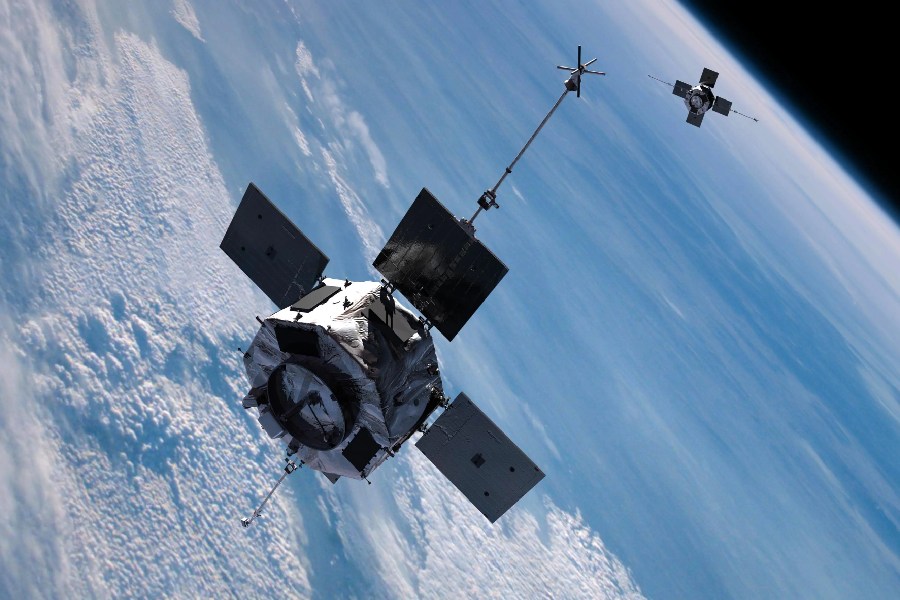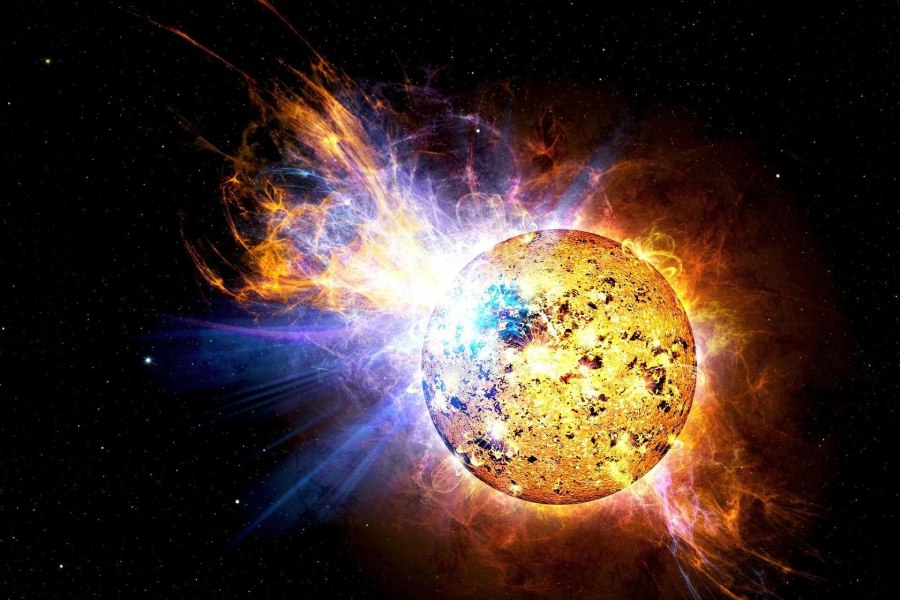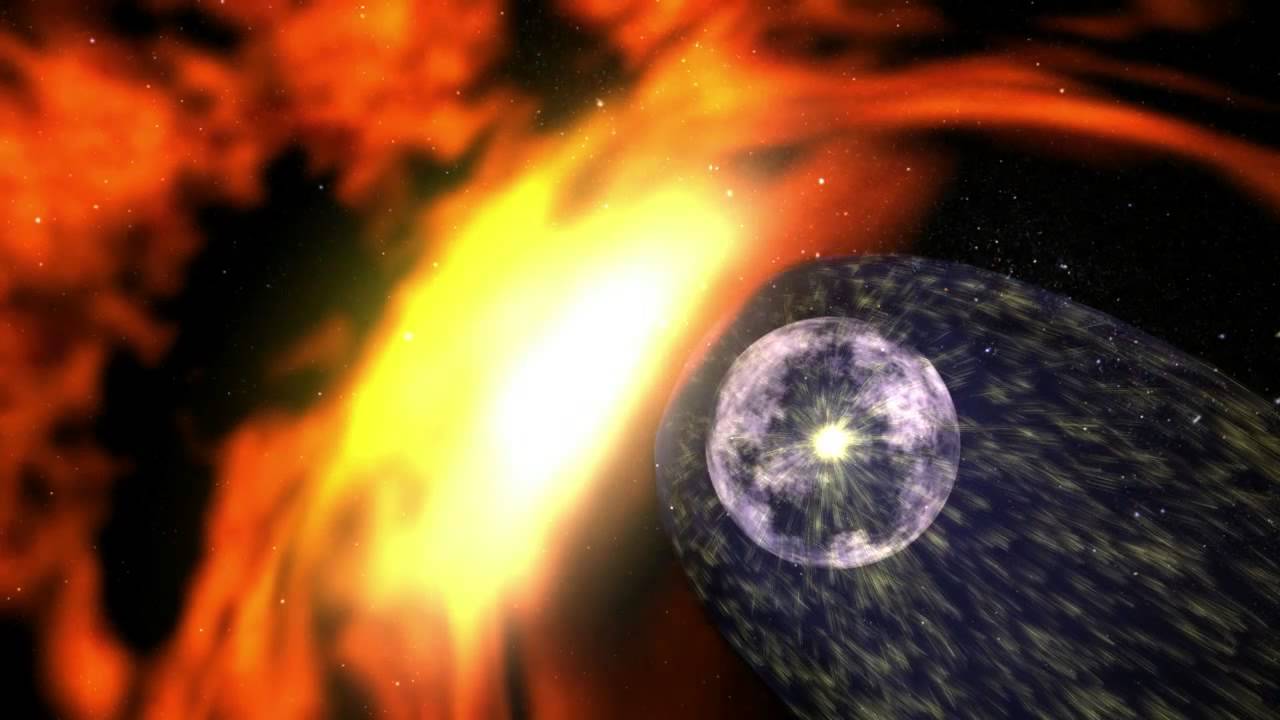Our Solar System is an oasis of warmth and light, surrounded by the cold void of interstellar space. Somewhere in the darkness lies a boundary marking the limit of our Sun’s influence. This frontier is known as the heliopause. But what is heliopause?
In this article, we’ll explore the fascinating science of the heliopause. Learn how our restless Sun shapes this boundary over time. Discover what spacecraft have glimpsed while crossing into interstellar territory. And see how conditions change when you exit the Sun’s protective bubble.
Read on to uncover the secrets of this distant frontier and the heliopause definition!

What Is Heliopause?
The heliopause is the boundary where our Sun’s influence ends, and interstellar space begins. It’s where the solar wind from the sun slows down and meets the winds from other stars.
Think of it as the sun’s space boundary in the vastness of space. This region, far beyond Pluto and the planets, marks the edge of our Solar System. It’s like the sun’s outer bubble, and when spacecraft cross this boundary, they officially enter the space between stars.
Location of the heliopause
What is heliopause distance from the Sun? The heliopause is estimated to lie 115-150 AU from the Sun. However, its distance fluctuates based on solar activity.
The heliopause lies beyond the termination shock and heliosheath at the fringes of the heliosphere. The heliopause has an asymmetric teardrop shape due to stellar motion, which may measure over 100 AU thick.
Variability of heliopause depending on solar activity
Increased solar wind pressure during solar maximum pushes the heliopause boundary outward slightly. Over the 11-year solar cycle, the heliopause distance varies up to 6 AU due to changes in solar output.
Long-term changes in the Sun’s activity can also affect the heliopause boundary over decades or centuries. The heliopause is estimated to have been closer to the Sun during the Maunder Minimum period of reduced solar activity.
Structure of the Heliopause
The heliopause is the outer boundary where our Sun’s solar wind meets interstellar space. This is the region where the bubble of hot charged particles from the Sun (the heliosphere) bumps up against the cooler gas and dust between the stars (the interstellar medium).
At the heliopause, the rapid solar wind undergoes a significant deceleration upon encountering the denser interstellar matter. This deceleration results in the formation of a distinctive shell enveloping the heliosphere, known as the heliosheath. The heliopause serves as the boundary where the intensely heated solar plasma gives way to the cooler interstellar plasma.
Influence of the solar wind on the heliopause
The heliopause location results from the delicate equilibrium between the dynamic pressures exerted by the solar wind and interstellar gases. The solar wind plays a crucial role in both shaping and maintaining the heliosphere bubble, acting as a protective barrier against interstellar pressures.
Variations in the intensity of the solar wind between the poles and the equator introduce distortions to the shape of the heliopause. Specifically, the heightened pressure from the increased solar wind force extends the heliopause boundary further outward during solar maximum periods.
This phenomenon underscores the dynamic nature of the heliosphere, showcasing its sensitivity to changes in solar wind intensity. This sensitivity is particularly pronounced during periods of peak solar activity.
Physical characteristics and dynamics
The heliopause experiences changes like fluctuating magnetic fields, density shifts, and plasma turbulence. Sometimes, hydrogen atoms from interstellar space can cross the heliopause boundary. Over time, the heliopause structure changes due to interactions at its boundary and shifts in solar activity.
Heliopause in Different Phases of the Solar Cycle
The Sun goes through regular 11-year cycles, switching between active and calm periods. When the Sun is active, solar flares and coronal ejections blast more particles outward in an intense solar wind. This expanded solar wind presses against the heliopause boundary with greater force.
The heliopause is the bubble where the solar wind meets interstellar space. As solar activity and wind strength fluctuate, the heliopause responds by moving inward or outward. A decrease in solar wind activity makes the heliopause contract, whereas a more energetic solar wind pushes the boundary of this bubble farther outward.
Variability in the heliopause structure
During solar peaks, increased solar wind pressure pushes the heliopause outward slightly. One model suggests it could move by 4-6 AU between solar minimum and maximum.
At solar max, the heliopause may become more symmetric; at solar minimum, it moves inward as solar wind declines. These changes have implications for studying the Sun’s long-term behavior.
Monitoring heliopause variability provides insights into the solar cycle and wider trends in solar magnetism. If the pattern of solar cycles shifts over decades, the heliopause should reflect these changes, revealing past solar conditions too faint to observe directly. By probing this frontier, we gain perspective on our star’s restless variability.

Space Probes & Measurements
Several robotic space probes have journeyed into the outer Solar System, covering billions of miles to reach the heliosphere’s edge. These explorers can detect plasma, fields, energetic particles, and dust in the heliopause region and beyond equipped with advanced instrument suites.
Key missions include Voyager 1, Voyager 2, Pioneer 10, Pioneer 11, New Horizons, and IBEX. Their long journeys far from Earth and still-active instruments enable unique in situ observations from the distant heliopause frontier.
The Voyager probes, in particular, have crossed the heliopause boundary and returned unprecedented data from interstellar space. They rely on radioisotope thermoelectric generators to provide power so far from the Sun.
Large high-gain antennas allow the spacecraft to transmit data back to Earth from over 10 billion miles away. Onboard computers autonomously control operations for the distant voyagers. The resilient designs of these probes have allowed them to far outlast their planned missions and revolutionize our understanding of the outer heliosphere.
Observations from space probes
In 2012, Voyager 1 observed abrupt plasma changes, indicating it had crossed the heliopause into the interstellar medium at a distance of 121 AU. Voyager 2 followed in 2018, detecting a jump in plasma density 119 AU out.
The Voyagers measured Galactic cosmic rays intensifying beyond the heliopause, indicating the transition into interstellar space. This helps derive the asymmetric shape, precise location, and particle dynamics near the heliopause.
The Voyagers monitor heliopause plasma, particles, fields, and radio emissions from unique vantage points. And IBEX maps the heliosphere and heliotail from Earth’s orbit. These observations reveal heliopause variations, interactions with interstellar wind, and the Sun’s influence.
Measurement techniques
Scientists use various techniques to detect when a probe exits the solar wind. They analyze transitions in plasma population, magnetic field orientation, and cosmic ray fluxes.
Additionally, radio tracking helps pinpoint boundary crossings by detecting slight spacecraft velocity changes. The scientific methodologies involved in these calculations are crucial.
Researchers combine plasma instruments, cosmic ray measurements, magnetic field directions, and radio tracking data to identify heliopause crossings. By comparing results from multiple probes, a broader perspective on boundary structure is gained.
Beyond the Heliopause: Interstellar Space
Venturing beyond the heliopause leads a spacecraft into interstellar space, a realm of sparse gas and dust amidst the stars. This region possesses distinct characteristics compared to the solar wind plasma within the heliosphere.
The transition into interstellar space occurs just outside the Sun’s influence. A limited number of spacecraft have crossed this boundary, undertaking measurements within the local interstellar medium.
Characteristics of the interstellar medium
The local interstellar medium has a lower plasma density, approximately 0.04-0.06 cm−3, compared to the heliopause, which is over 10 times denser. Unlike the heliospheric field, the interstellar magnetic field has a different orientation.
Also, Galactic cosmic rays with high energy easily move through interstellar space. Moreover, the interstellar wind, outside the heliopause, flows at a speed of about 26 km/s relative to the Sun.
Future possibilities
Further study can refine our understanding of heliopause’s asymmetries and time variability. Missions such as Interstellar Probe will seek to collect data in pristine interstellar space, extending beyond the heliopause. This data can uncover interactions on larger scales within the local interstellar medium.

Conclusion
What is heliopause? This complex boundary encapsulates our Solar System and modulates galactic influences. Its shape breathes and ripples in response to our variable Sun.
As spacecraft explore the local interstellar medium, our grasp of the heliopause grows. Maybe one day, humans will look back at our home system’s bubble from beyond its edges.
Observing processes at this distant border provides perspective on our place in the galaxy. Pioneering probes beyond the heliopause reveal the interconnectedness of stars, guiding us to deeper insights into our cosmic backyard.

